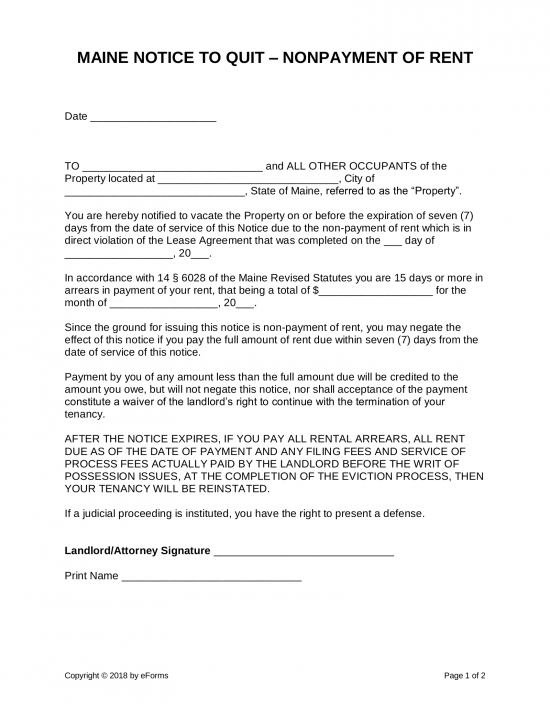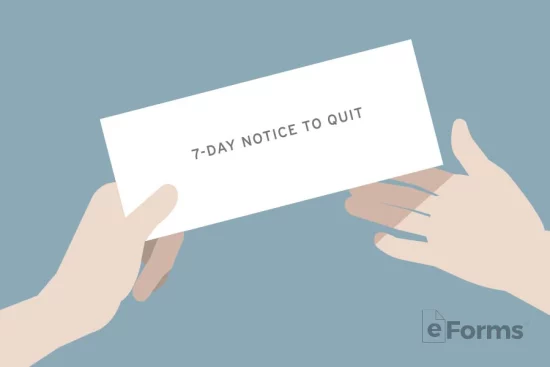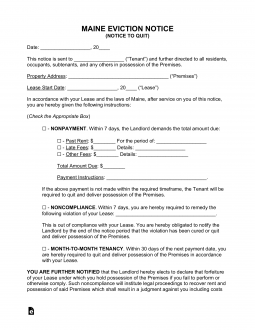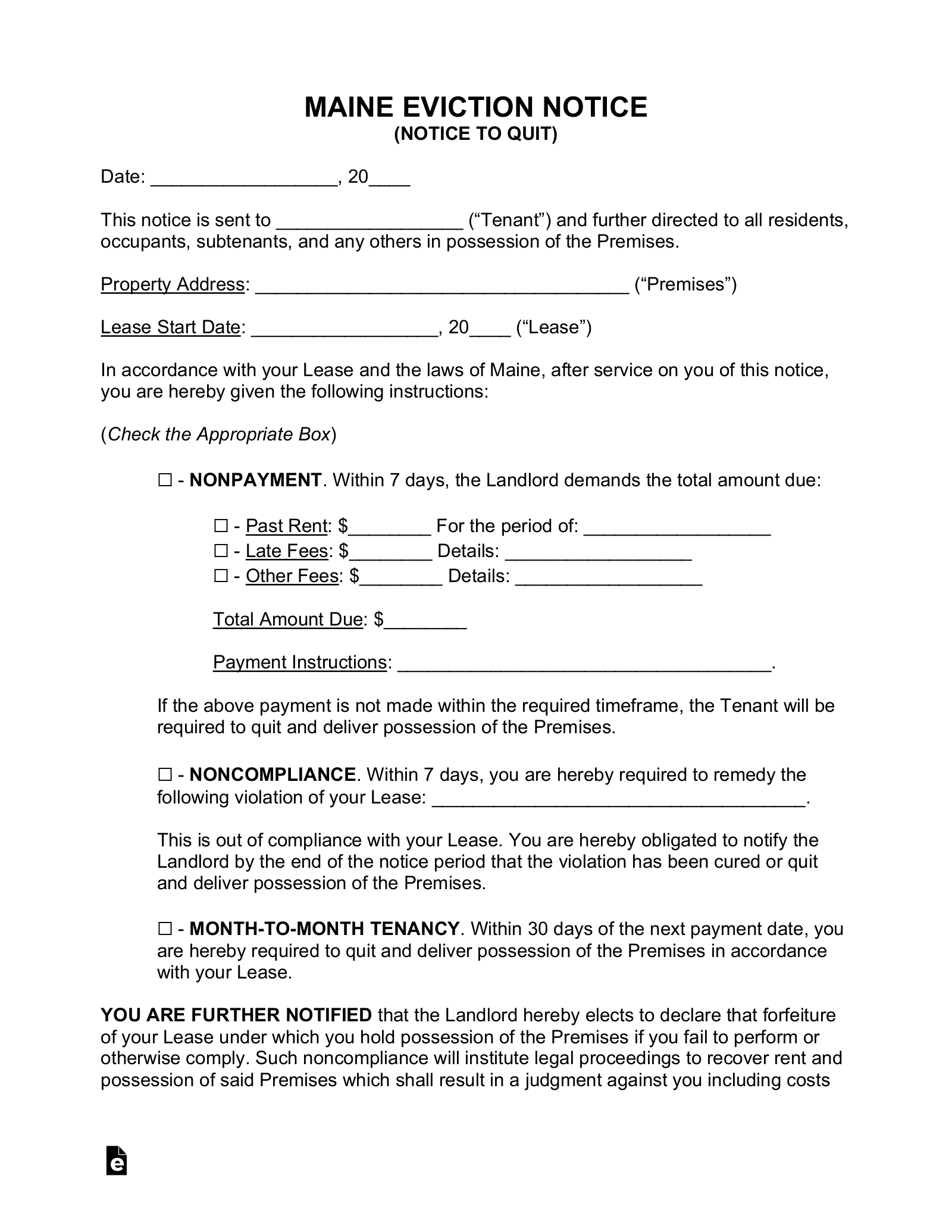Updated February 06, 2024
A Maine eviction notice is a legal document used by landlords to notify a tenant that they are not in compliance with their lease. This is most commonly for late rent but can be for any type of lease violation. If the tenant does not adhere to the demands of the notice, the landlord may file an eviction action.
By Type (3)
 7-Day Notice to Quit (Non-Payment) – The landlord may use this form of notice to let the tenant know they must pay the full amount of rent within seven days or face eviction proceedings. 7-Day Notice to Quit (Non-Payment) – The landlord may use this form of notice to let the tenant know they must pay the full amount of rent within seven days or face eviction proceedings.
Download: PDF, MS Word, OpenDocument |
 7-Day Notice to Quit (Non-Compliance) – The landlord may use this form to let the tenant know they must cease the breach of the lease terms (other than non-payment of rent) within seven days or face eviction proceedings. 7-Day Notice to Quit (Non-Compliance) – The landlord may use this form to let the tenant know they must cease the breach of the lease terms (other than non-payment of rent) within seven days or face eviction proceedings.
Download: PDF |
 30-Day Notice to Quit (Month-to-Month Tenancy) – This form is for use when a landlord seeks to end a month-to-month tenancy. 30-Day Notice to Quit (Month-to-Month Tenancy) – This form is for use when a landlord seeks to end a month-to-month tenancy.
Download: PDF, MS Word, OpenDocument |
Table of Contents |
Court Forms
State Instructions (Form CV-100) – Instructions that describe how to file an eviction case in Maine.
Complaint for Forcible Entry and Detainer (CV-007) – If a tenant has broken their lease, the landlord may use this form to petition the court to begin the eviction process.
Request for Issuance of Writ of Possession (CV-195) – Used to request a Writ of Possession when the tenant refuses to leave the landlord’s property after a judgment has been made in the landlord’s favor. The Writ grants the landlord the right to have the tenant physically removed.
Affidavit of Service, Forcible Entry & Detainer (CV-204) – After the tenant has been served a notice of summons, the landlord must file this affidavit which attests that the service has taken place.
Notice of Appeal and Affidavit Forcible Entry & Detainer (CV-206) – Used by tenant to appeal their eviction judgment.
How to Evict a Tenant (4 steps)
- Deliver Eviction Notice to Tenant
- File Complaint and Summons
- Deliver Copies to Sheriff for Service on Tenant
- Receive Court Judgment / Obtain Writ of Possession
1. Deliver Eviction Notice to Tenant
Before a landlord can go to court to evict a tenant, they must provide written notice to the tenant that they are breaching the lease or that the tenancy will end after 30 days. The landlord must try at least three times to deliver the notice in person. If that fails, the notice may be mailed. The landlord should keep a copy of the notice and evidence that it was delivered. The notice forms are as follows:
- 7-Day Notice to Quit (Non-Payment)
- 7-Day Notice to Quit (Non-Compliance)
- 30-Day Notice to Quit (Month to Month)

2. File Complaint and Summons
If the tenant does not respond to the notice to quit, the landlord may then commence a forcible entry and detainer action by filing the Complaint (CV-007) and Summons (Form CV-034), which must be obtained from the Clerk’s Office ($5 fee).[10] A filing fee of $75 is required.[11]
3. Deliver Copies to Sheriff for Service on Tenant
The landlord must then take a copy of the Summons and Complaint to the sheriff for service on the tenant. The landlord must provide evidence of service, either from the sheriff or, if the sheriff is unable to serve, by mailing the summons and filing an Affidavit of Service (CV-204) with the court. The tenant will have to receive the summons at least seven days before the date of the hearing.
4. Receive Court Judgment / Obtain Writ of Possession
If the tenant fails to appear at the hearing, the court will issue a default judgment, and the tenant must vacate immediately. If the tenant still fails to vacate, the landlord may obtain a Writ of Possession (CV-195) from the court and have the sheriff remove the tenant.


